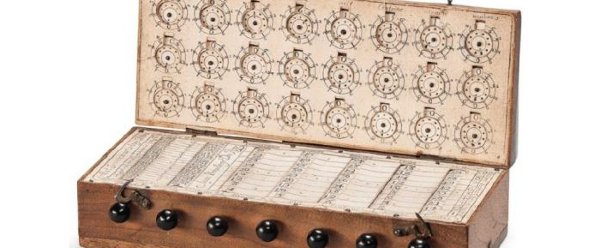
What is thought to be one of only four surviving 17th-century French pocket calculating machines is set to be sold at Christie’s auction house in London in October.
Despite being described as a ‘pocket’ device, the calculator has dimensions of 14.5cm by 32.5cm, so rather deep pockets would be needed.
Metaphorically speaking, deep pockets will also be needed to afford the estimated price for the device of between £70,000 and £100,000.
It is believed the machine was made in 1673 by René Grillet, who was a mechanician and watchmaker to French King Louis XIV.
The calculating device that dates back to 1673 comprises 24 rotating dials arranged in three rows of eight located on the interior lid of a walnut wooden box.
Each wheel consists of several concentric circles, while the bottom of the box contains a set of rolling cylinders carrying logarithmic tables.
James Hyslop, head of Travel, Science and Natural History at Christie’s, said: "This pocket-sized calculator is one of the earliest surviving pieces in the history of the computer.
"Mechanical calculators date from the 1640s, but were big clunky brass machines. This small lightweight machine, based on Napier’s logarithm was one of the earliest portable designs."
The Arithmetical machine performs all the arithmetic operations including addition, subtraction, multiplication and division through the use of these rolling rotating Napier’s ‘bones’.
There are only three other known examples of this design, two of which are in the Musée des Arts et Métiers, Paris and the other in the collections of IBM in New York.






